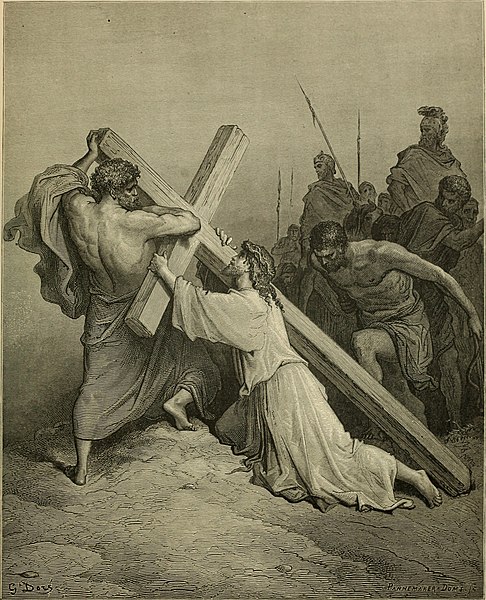Eris, often overshadowed by the more celebrated gods and goddesses of Olympus, holds a unique place in Greek mythology. As the goddess of strife and discord, her tales are woven with threads of conflict, rivalry, and the inevitable chaos that follows.
Eris Key Facts
| Parents | Nyx (Night) or Nyx and Erebus |
| Partners | None |
| All Siblings | Thanatos, Hypnos, Nemesis, and others |
| Offspring | Lethe, Ponos, Limos, and others |
| Other names | Discordia (Roman name) |
| The Goddess of | Strife and Discord |
| Symbols | Golden Apple |
Name and Etymology
Eris, a name that resonates with conflict, has its roots in the Greek word meaning “strife” or “discord.” This etymology perfectly encapsulates her essence and the role she plays in various myths. In Roman mythology, she is known as Discordia, a name that further emphasizes her association with chaos and disagreement.

Eris Origins
Born to the primordial goddess Nyx, Eris belongs to a lineage of deities that personify fundamental aspects of the universe. Her siblings, including the likes of Thanatos (Death) and Hypnos (Sleep), play crucial roles in the lives of gods and mortals alike. Eris’s birth wasn’t accompanied by celebrations or prophecies. Instead, she emerged as a force representing strife, ready to weave her tales of discord among gods and mortals.
From her earliest moments, she embodied her role, sowing seeds of conflict wherever she went. As a Daemone, or a personified spirit, Eris represents the very essence of strife and discord in Greek myth. Her actions and interventions, often indirect, set the stage for larger events, emphasizing the ripple effect of strife in the interconnected world of Greek myths.
Eris Lovers and Relationships
Eris, by her very nature, didn’t engage in romantic entanglements or passionate affairs. Instead, she often infused her relationships with chaos. While many gods enjoyed the company of lovers and consorts, Eris remained distinct. Her nature frequently clashed with the notion of romantic unions, setting her apart from the rest.
Eris Offspring
Despite her solitary nature, Eris was credited with giving birth to several daemones, each personifying various forms of pain and hardship. Among her notable offspring are Lethe (Forgetfulness), Ponos (Hardship), and Limos (Starvation). Each of these entities played specific roles in the lives of mortals, bringing with them the challenges and trials that humans often faced.
Depiction And Characteristics
Eris, with her association with strife, has a distinct appearance in Greek art and literature. Often portrayed as a beautiful but fierce goddess, her presence is always accompanied by symbols of discord and conflict.
Her beauty sharply contrasts the chaos she embodies. Artists often portray her with intense eyes and a stern expression, capturing her essence as a formidable force. Moreover, her most iconic symbol, the golden apple, frequently accompanies her, serving as a vivid reminder of the discord she can effortlessly sow with a simple act.
Personality and Powers
Eris’s personality is as complex as the tales associated with her. While she embodies strife and discord, she isn’t inherently evil. Instead, she represents a natural force, emphasizing the balance between peace and conflict.
As the goddess of strife, Eris possesses the power to incite conflict and disagreement. Whether among gods or mortals, her influence can turn allies into foes and peaceful gatherings into battlegrounds. Her mere presence can amplify existing tensions, leading to full-blown disputes.
Eris Symbols
The golden apple is the most iconic symbol associated with Eris. This simple fruit, when thrown by Eris with the inscription “To the Fairest,” led to a dispute among goddesses and eventually to the Trojan War. The apple symbolizes the far-reaching consequences of strife and discord, even when the cause seems trivial.
Eris Roles And Responsibilities
In the grand scheme of Greek mythology, Eris played the role of the instigator. While she didn’t often participate directly in conflicts, her influence set the stage for many significant events. From personal disputes among gods to wars that shaped the course of history, Eris’s touch was evident. Her primary responsibility was to maintain the balance between peace and conflict, ensuring that neither force dominated the other.
Myths about Eris
Eris, the embodiment of strife and discord, has left an indelible mark on Greek mythology. Her tales, though not as numerous as some other deities, are profound in their implications, revealing the intricate dance of fate, pride, and retribution. Let’s delve deeper into two of her most iconic myths, shedding light on Eris’s pivotal roles.

The Golden Apple and the Onset of the Trojan War
The wedding of Peleus and Thetis, a sea nymph was an event of grandeur, attended by almost all the gods and goddesses. However, Eris, given her nature, was not invited, a slight she didn’t take lightly. In retaliation, she crafted a masterstroke of mischief. She threw a golden apple into the festivities, inscribed with the words “To the Fairest.” This seemingly innocuous act set off a chain of events that would lead to one of the most epic wars in Greek mythology.
Three goddesses, Hera, Athena, and Aphrodite, each believed the title of “fairest” belonged to them. Unable to decide among themselves, they sought the judgment of Paris, a prince of Troy. Each goddess, in an attempt to sway his decision, offered him a tempting bribe. Hera promised him power, Athena offered wisdom, and Aphrodite, the love of the most beautiful mortal woman, Helen, The Most Beautiful Woman In The World. Paris, smitten by the prospect of love, chose Aphrodite’s offer.
However, Helen was already married to Menelaus, the king of Sparta. Her abduction by Paris set the stage for the Trojan War. This decade-long conflict, with its vast scale of destruction and loss, can be traced back to Eris’s act of revenge. The golden apple, while a symbol of beauty, also became an emblem of the chaos that ensues when pride and vanity go unchecked.
The Strife of Polytechnus and Aedon
In the city of Thebes, there lived a craftsman named Polytechnus, renowned for his exceptional weaving skills. He was married to Aedon, a woman of unparalleled beauty and grace. Together, they lived a life of contentment, blessed with a son. Their love for each other was so profound that they once boastfully compared their marital bliss to that of the divine couple, Zeus, The Supreme God and Hera.
Hera, the queen of the gods, was known for her jealousy and was not one to let such a slight go unnoticed. She dispatched Eris, the goddess of strife and discord, to sow seeds of enmity between the loving couple. Eris, ever eager to fulfill her role, whispered a challenge into their ears: a weaving contest. The one who finished their task last would present the other with a servant.
As the contest began, Aedon, with her nimble fingers, quickly took the lead. Polytechnus, realizing he was about to lose, was consumed by anger and envy. In a fit of rage, he traveled to the house of Aedon’s father and violated her younger sister, Khelidon. To conceal his heinous act, he cut off Khelidon’s tongue and brought her back to Thebes, presenting her to Aedon as the servant he owed her.
Aedon, unaware of the servant’s true identity due to Khelidon’s inability to speak, was initially none the wiser. However, over time, Khelidon managed to communicate her identity and the atrocity committed against her by weaving a tapestry that detailed the entire event. Aedon, upon realizing the truth, was consumed by grief and rage. In her quest for vengeance, she devised a plan as cruel as the act that had befallen her sister.
The Tragic End to Story of Polytechnus and Aedon
One night, Aedon murdered her son with Polytechnus and cooked him into a stew. Unbeknownst to Polytechnus, he consumed the meal, and it was only afterward that Aedon revealed the horrifying truth of what he had eaten. The revelation shattered Polytechnus, and the once-loving couple was now bound by a chain of tragedies.
The gods, looking down upon these events, were filled with pity and horror. To spare them further suffering and to serve as a reminder of the dangers of hubris, they transformed Polytechnus and Aedon into birds. Aedon became the nightingale, forever lamenting her lost child and sister with her mournful song.
Eris In Ancient Greek Religion
Eris, while not the most revered goddess, held a unique place in Greek religious practices.
Temples dedicated to Eris were sparse, reflecting her complex relationship with worshippers. These sites served as reminders of the delicate balance between harmony and strife and the goddess who personified it.
Mentions in Ancient Texts
Here are some notable mentions of Eris:
- Hesiod’s “Theogony” and “Works and Days”:
- Author: Hesiod, an ancient Greek poet generally thought to have been active between 750 and 650 BC.
- Texts: In “Theogony”, Hesiod introduces Eris as the daughter of Nyx (Night) and describes her offspring, which include toil, forgetfulness, starvation, pains, battles, murders, quarrels, lies, and disputes. In “Works and Days”, Hesiod differentiates between two types of Eris: one that promotes hard work and competition, and another that fosters laziness and conflict.
- Time: Circa 700 BC.
- Homer’s “Iliad”:
- Author: Homer, traditionally said to be the author of the ancient Greek epic poems the “Iliad” and the “Odyssey”.
- Text: In the “Iliad”, Eris is equated with Enyo, the goddess of war. She is depicted as a companion of Ares, the god of war, and is described as delighting in the tumult of battles.
- Roman Mythology:
- Author: Various Roman authors.
- Text: In Roman mythology, Eris is known as Discordia. While her stories in Roman myths are similar to those in Greek myths, the Romans had their own interpretations and variations.
- Time: Roman Classical Age, spanning from the late Republic to the early days of the Roman Empire (circa 1st century BC to 1st century AD).
Frequently Asked Questions
Eris is the daughter of Nyx, the primordial goddess of the night.
The golden apple is symbolic of the discord Eris can sow. She used it to incite a dispute among goddesses, leading to the Trojan War.
While Eris represented strife, she wasn’t inherently evil. She embodied a natural force, emphasizing the balance between peace and conflict.
Featured Image Credit: Rijksmuseum, Public domain, via Wikimedia Commons
